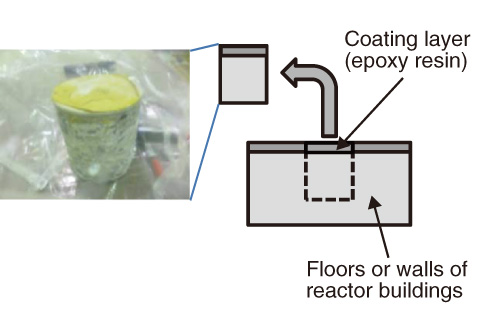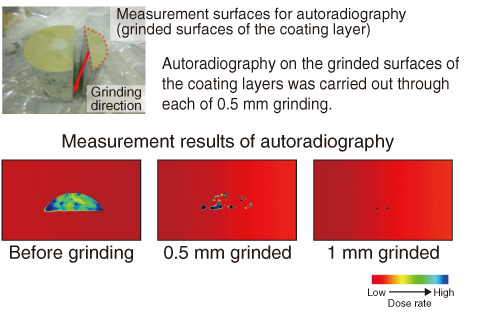
Fig.1-45 Photograph of concrete core boring sample

Fig.1-46 Evaluation of penetration depth of radioactive contaminant
Decontamination technology that uses remote access devices has to be developed to reduce the radiation dose of workers in the reactor buildings toward the decommissioning of the TEPCO’s Fukushima Daiichi NPS (1F). For effective decontamination, it is necessary to comprehend the status of radioactive contamination inside the reactor buildings, specifically, the component nuclides, penetration into the floors or walls, and distribution of the radioactive contaminant. In particular, detailed radioanalysis is needed to evaluate the penetration of the radioactive contaminant into the floors or walls. We conducted a series of radioanalysis tests of concrete core boring samples taken from the floors and walls of the 1F reactor buildings (Fig.1-45) at the post-irradiation examination facilities in the Oarai Research and Development Center. Various radioanalytical techniques such as α- and γ-spectrometry and autoradiography, which have been developed in the facilities so far, were used for the radioanalysis of core boring samples; the penetration of the radioactive contaminant was thus evaluated.
The results of the radioanalysis tests showed 134Cs and 137Cs as the dominant contaminant nuclides, with a ratio of radioactivity of 134Cs:137Cs = 2:3 in August 2012. It was revealed that the radioactive contaminant has penetrated heterogeneously to a 1 mm depth from the surface of the coating layer of the floor (2.5 mm thick) at the maximum (Fig.1-46). Of note is the difference in the penetration depth in the coating layer between 1F1/1F3 and 1F2: 0.5 and 1 mm, respectively. Removal tests of the radioactive contaminant near the surfaces of the coating layer were then conducted by several cleaning methods using pure water or citric acid and an ablation gel for further investigation of the difference in the penetration depth of the radioactive contaminant. The removal tests yielded almost complete removal of the residual radioactive contaminant that penetrated to a 1 mm depth from the surface of the coating layer. This result indicates that the radioactive contaminant can be characterized not by penetration into the coating layer itself by, for example, a chemical reaction with the coating layer material, but by adherence of the contaminant in microcracks or breaches on the surface of the coating layer, considering the heterogeneous penetration of the radioactive contaminant into the coating layer. This result suggests the potential applicability of the above-mentioned removal method without actual removal of the coating layer.
These radioanalysis results are reflected in the remote decontamination plan for the 1F reactor buildings in terms of the selection of suitable removal methods for the radioactive contaminant and optimization of the demonstration test conditions for the decontamination apparatus.
<Previous: 1-20 | Next: 2 Research and Development of Advanced Nuclear System >